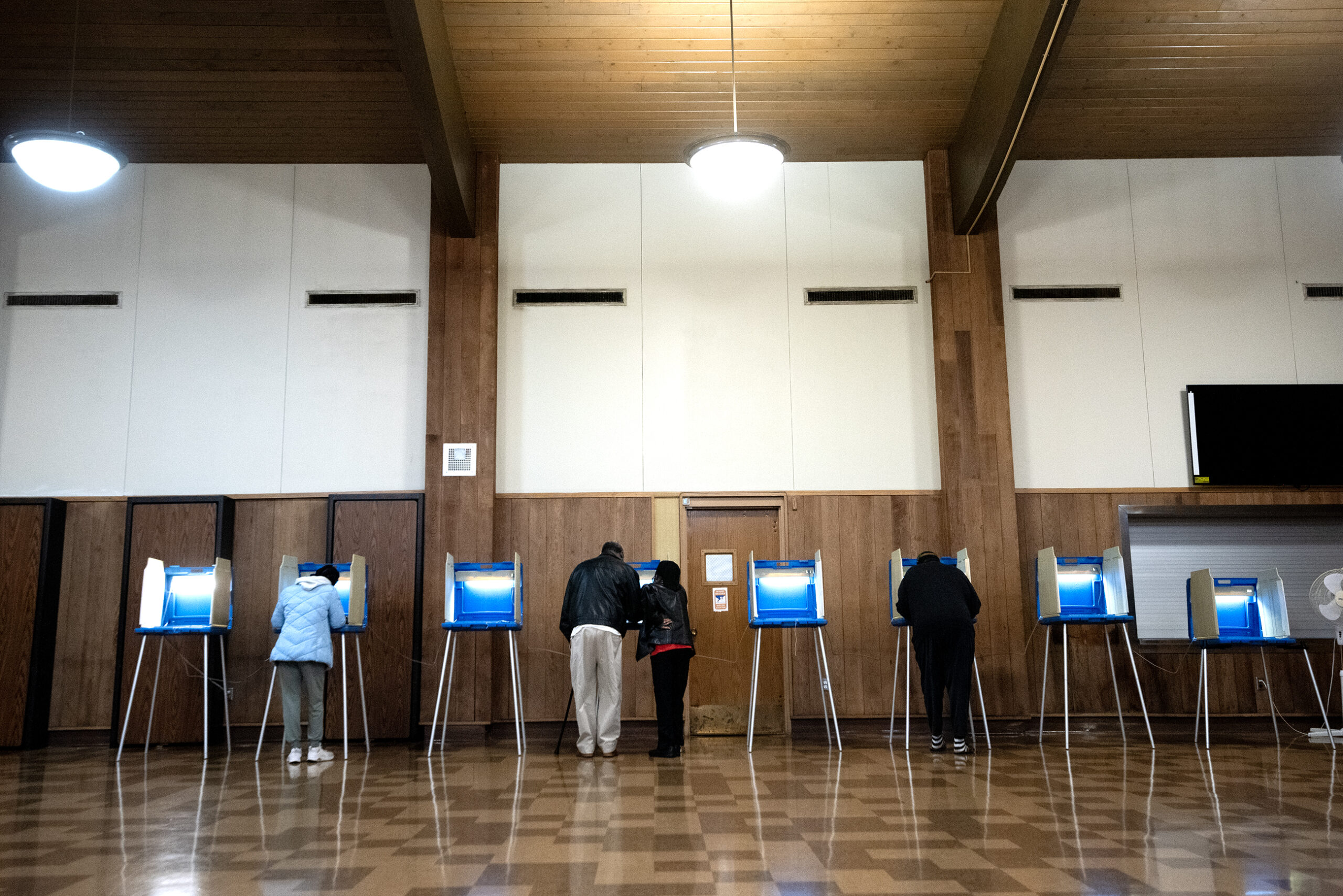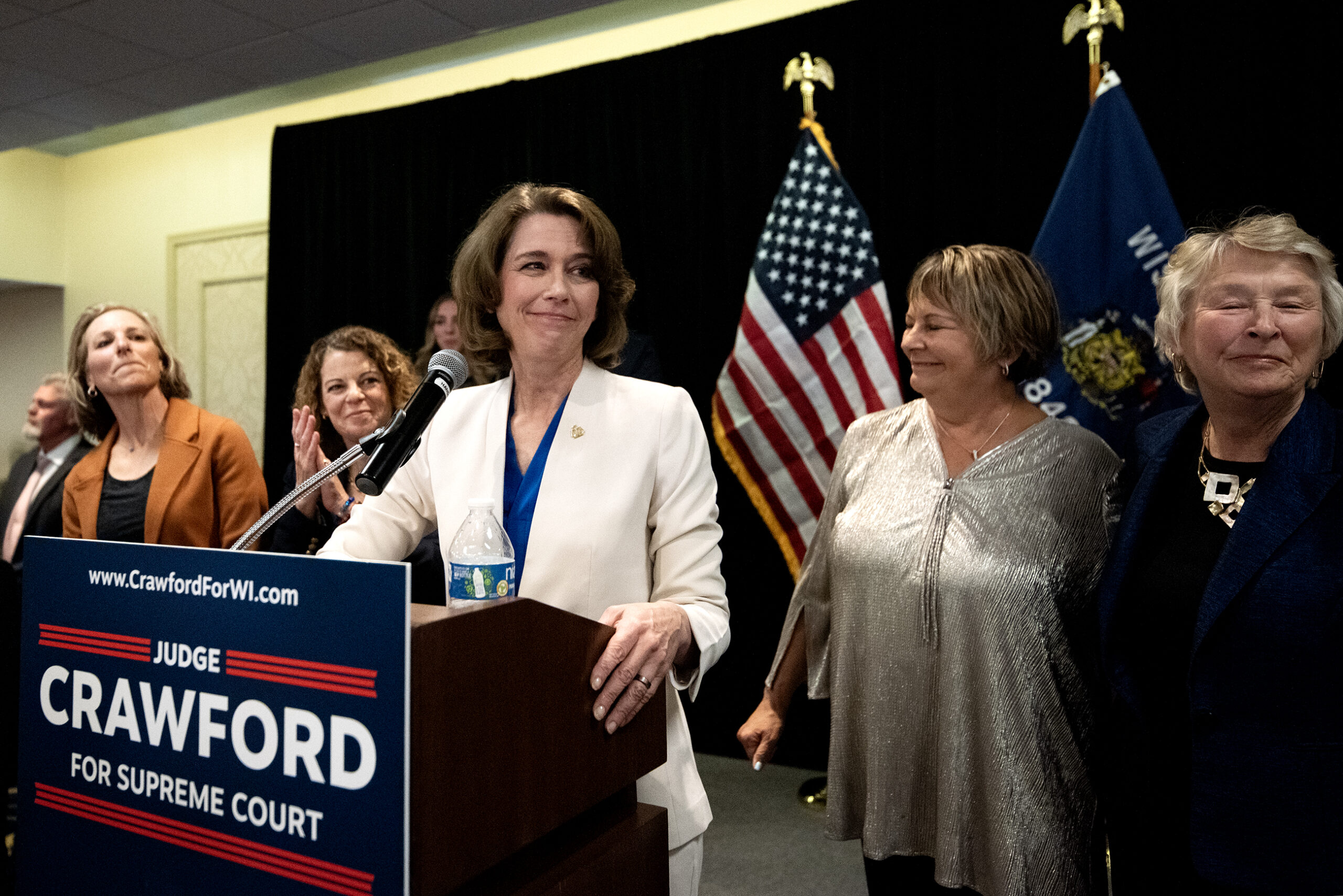Election night viewers of CNN and other broadcasts saw the map of Wisconsin flashed repeatedly on their TV screens, with a noticeable patch of blue surrounded by a sea of red in the far northwest region of the state.
Those were Douglas, Bayfield and Ashland counties, which now largely comprise the newly redrawn 73rd Assembly District. On Tuesday, Democrat Angela Stroud was the winner in that race, recapturing a seat that had flipped Republican in 2022.
Just below is the 74th District, which was also redrawn but where incumbent Republican Rep. Chanz Green easily turned back his Democratic challenger.
News with a little more humanity
WPR’s “Wisconsin Today” newsletter keeps you connected to the state you love without feeling overwhelmed. No paywall. No agenda. No corporate filter.
University of Wisconsin-Superior political science professor Alisa Von Hagel is well-versed on the area’s electoral trends, including the reelection of Republican 7th Congressional District Rep. Tom Tiffany. She spoke about the races with WPR’s Robin Washington on “Morning Edition,” analyzing the outcomes both politically and policy-wise, such as in continued support for the billion-dollar-plus replacement of the Blatnik Bridge.
This conversation has been edited for clarity and brevity.
Robin Washington: This was the first election under the redrawn district maps that reversed the Republican advantage under the maps adopted in 2011. As expected, the 73rd district that includes Superior, and now stretches to Bayfield and Ashland, flipped back to blue with the victory of Angela Stroud over Republican Frank Kostka. The seat was left open when the incumbent Republican, Angie Sapik, decided against running again.
Alisa Von Hagel: It was surprising to me that the incumbent stepped down, although as you stated, the redrawing of the maps gave a bit more weight to the Democratic leanings of the area. That allowed Stroud to coast to victory.
RW: Conversely, in the new 74th district right underneath the 73rd, incumbent Republican representative Chanz Green retained his seat over Democrat Jeanne Bruce.
AVH: Yes. Green won with an even greater percentage of the vote. That’s the largest district in the state. He did well even in Ashland, Bayfield and Douglas counties, where at least the northern portion of those counties lean blue. His incumbency gave him an advantage, as well as being a sportsman and supporting hunting and fishing in the area.
RW: Also in the region are the 75th district, where Republican Duke Tucker beat Democrat Jane Kleiss, and the 67th, where Republican Dave Armstrong, who currently represents the 75th but was redistricted out, beat Democrat Jeff Foster.
AVH: In those races and also statewide, there was great anticipation that they could flip from Republican to Democrat, given that the new boundaries were drawn by the Democratic Party. But the Republicans still managed to hold on in a lot of areas. Some of that has to do with incumbency, or candidates just connecting with voters more so than their opponents.
RW: In the Congressional races in our region, Wisconsin’s Tom Tiffany and Minnesota’s Pete Stauber, both Republicans, cruised to victory. One question WPR asked Tiffany last month is if he would continue to support the Blatnik Bridge replacement, which received a billion dollars from President Biden, who visited the area twice. Tiffany said he would, though he did suggest that the bridge might be brought in at $1 billion instead of $1.8 billion as projected.
AVH: This is a project that is of crucial importance for this area, and certainly any member of Congress would be loath to turn away funds. Regardless of the sitting president, members of Congress from this area would absolutely still want to support having those funds to come to the area.
RW: President Biden came to Superior twice within two years to tout the bridge replacement. Politically, was it worth it in the end?
AVH: Wisconsin was a crucial swing state, and this area tends to lean Democratic in a portion of the state that otherwise tends to be more conservative. So even though there were some crucial Democratic losses statewide, the visits helped maintain that Democratic presence that has been in this area for so long.
If you have an idea about something in northern Wisconsin you think we should talk about on “Morning Edition,” send it to us at northern@wpr.org.







